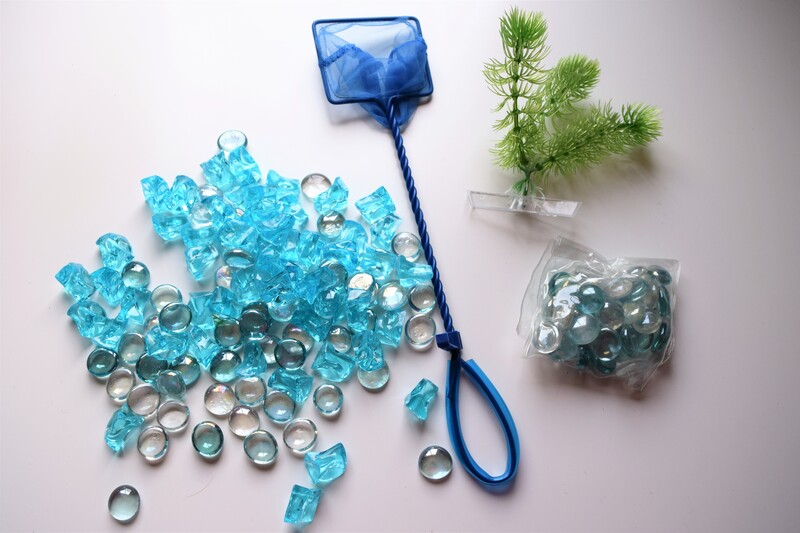Elevate Sofa Care: Top Expert Tips for Prolonged Storage
Posted on 17/05/2025
Elevate Sofa Care: Top Expert Tips for Prolonged Storage
Your sofa is not just a piece of furniture; it's the heart of your living space. Whether you're moving, renovating, or simply upgrading your home decor, sometimes storing your sofa for an extended period is unavoidable. But how do you ensure that your beloved couch remains pristine during storage? Elevated sofa care is crucial to guarantee that your investment stays in excellent condition and is ready for use when you need it again.
This comprehensive guide explores the best expert tips on sofa storage, covering preparation, packing, storage unit choices, and long-term maintenance. Read on to discover actionable strategies to protect and preserve your sofa--even during prolonged storage bouts.

Why Expert Sofa Storage Care Matters
Many homeowners underestimate the impact of improper storage. Sofas are crafted from various materials--fabric, leather, wood, or metal--each with unique needs. Incorrect storage methods can result in irreversible damage such as warping, fading, mold, mildew, and pest infestations. By understanding the proper ways to care for your sofa during storage, you safeguard its value, aesthetics, and longevity.
Common Issues with Poor Sofa Storage
- Mold and Mildew: Storing a sofa in a humid or damp environment can cause unsightly and unhealthy fungal growth.
- Fabric Fading: Exposure to direct sunlight or harsh lighting can fade fabric upholstery, making your sofa look old before its time.
- Wood Warping: Wooden frames may warp or crack from fluctuating temperatures or moisture.
- Pest Intrusion: Rodents and insects can nest or chew on sofa materials if not adequately protected.
- Structural Damage: Improper stacking or placing heavy objects on top can deform the sofa's shape.
With the following sofa care storage strategies, you can confidently store your sofa for years and enjoy it again, looking as good as new.
Step 1: Clean Your Sofa Thoroughly
The first step in prolonged sofa storage is a deep clean. Any dirt, crumbs, or spills left on the couch invite pests and unpleasant odors.
How to Clean Different Sofa Materials
- Fabric Sofas: Vacuum thoroughly, including under the cushions and along seams. Use a gentle fabric cleaner or upholstery shampoo for stains. Ensure the sofa is completely dry before storage.
- Leather Sofas: Wipe down with a slightly damp microfiber cloth. Apply a high-quality leather conditioner to retain suppleness and prevent drying or cracking.
- Wood or Metal Components: Dust and clean armrests, legs, and frames. Use appropriate cleansers or polish for wood and metal parts.
Never store a damp or dirty sofa -- you risk permanent damage, staining, or musty odor that becomes impossible to remove after months in storage.
Step 2: Disassemble When Possible
One of the most effective storage tips for sofas is to disassemble them when feasible. Remove cushions, legs, and detachable parts. Not only does this minimize the risk of accidental damage, but it also makes it easier to transport and stack your furniture.
- Store small parts separately (in labeled bags or boxes), such as screws, bolts, or connectors for easy reassembly.
- Wrap delicate wooden or metallic legs in bubble wrap or furniture blankets for extra protection.
Remember to take pictures before and during disassembly--these will help during reassembly, especially after an extended storage period.
Step 3: Choose the Right Storage Space
The type of storage environment you select can make all the difference in effective sofa care. A climate-controlled storage unit is the gold standard for long-term sofa storage.
- Temperature Control: Protects against high heat and freezing, which can warp wood and damage upholstery.
- Humidity Regulation: Prevents moisture build-up, which is a breeding ground for mold, mildew, and rust.
If climate-controlled units are unavailable, look for indoor and well-ventilated storage to reduce environmental risks.
Additional Sofa Storage Tips for Homeowners
- Keep sofas off garage floors: Place them on wooden pallets or tarps to prevent direct moisture contact.
- Avoid storing in leaky basements or drafty sheds: These environments are more susceptible to pests and weather-related damage.
Step 4: Wrapping and Covering for Protection
Properly covering your sofa is essential for ultimate protection. Professional storage experts recommend using breathable covers, not plastic, for most furniture.
- Fabric Sofas: Use cotton or canvas covers that allow airflow and prevent moisture accumulation.
- Leather Sofas: Cover with soft, dry cloths to prevent scratching and avoid moisture-trapping materials.
- No Plastic Wraps: Plastic can suffocate upholstery and trap condensation, leading to mildew or leather damage.
- For Added Protection: Use moving blankets for padding, especially if the sofa is being moved frequently or stacked with other items.
If professional furniture covers aren't available, large sheets or blankets work as well--just change them periodically during very long-term storage.
Step 5: Positioning Your Sofa in Storage
How you arrange your sofa in your storage unit can safeguard against unnecessary wear and tear.
- Never store sofas on their sides or ends. Always keep them upright to prevent frame distortion.
- Leave space around the sofa. Avoid pressing your couch directly against walls or other furniture to encourage air circulation and reduce moisture build-up.
- Avoid stacking heavy items on top. This can cause indents, warping, or crushed cushions.
Step 6: Ongoing Care During Prolonged Storage
Even in storage, your sofa benefits from regular check-ups. If you know your furniture will be unused for months or years, establish a simple maintenance schedule:
- Inspect the storage area every few months for signs of leaks, pests, or excessive humidity.
- Rotate or fluff cushions for fabric sofas to avoid uneven wear or musty odors.
- Refresh covers or blankets to ensure they remain clean and free from dust or moisture.
For extra peace of mind, consider placing silica gel packs or moisture absorbers near (not on) the sofa to control humidity levels.
Addressing Different Sofa Materials: Expert Advice
Caring for Leather Sofas in Storage
- Clean and condition the leather before storage. This prevents cracks and keeps the leather supple.
- Avoid direct sunlight or heat sources in storage that can dry out leather finishes.
- Use breathable coverings exclusively -- never plastic -- for leather furniture.
Storing Fabric Sofas Safely
- Deep-clean and dry upholstery fully to prevent mold and mildew.
- Cover with cotton sheets or furniture blankets. Avoid plastic, which traps moisture.
- Maintain airflow around the sofa, especially in humid climates.
Wood and Metal Sofa Frame Storage Tips
- Wax or oil wooden frames to lock in moisture and protect against cracking or swelling.
- Inspect for insect activity: If storing for multiple years, apply non-toxic insect repellents to wood.
- Store metal parts dry and, when possible, use anti-rust sprays on vulnerable areas.
Pest Protection Strategies
Rodents and insects love cozy sofas. Instead of dealing with gnawed fabric or droppings, take these preventative measures:
- Use rodent deterrents: Ultrasonic devices or natural repellents (like peppermint oil sachets, placed near but not touching your sofa) can help keep pests at bay.
- Seal storage units completely: Patch gaps, cracks, or holes in the flooring or walls.
- Avoid storing food or scented items anywhere near your couch or storage unit.
Expert Advice: What to Avoid When Storing Sofas
- Do not use shrink wrap or non-breathable plastic sheeting on sofas.
- Don't stack open books, electronics, or potentially leaking boxes on upholsteries.
- Never leave sofas in direct sunlight, even inside a storage unit with windows.
- Do not overload storage units; overcrowding prevents airflow and may cause accidental tipping or crushing.
By steering clear of these common mistakes, you'll significantly increase the lifespan of your furniture during even the longest storage durations.
Pro Tips for Reintroducing Stored Sofas into Your Home
- Allow sofas to air out for at least 24 hours post-storage, especially fabric varieties, before assembling and using them indoors.
- Confirm there's no odor, moisture, or signs of pests. If needed, vacuum thoroughly and wipe down frames with appropriate cleaners.
- Recondition leather upholstery with a fresh application of conditioner to revive luster and flexibility.
- Check all parts and connectors during reassembly to ensure structural safety.
Summary: The Best Strategies for Elevated Sofa Storage Care
Caring for your beloved sofa during prolonged storage doesn't have to be complicated. By embracing a series of simple expert tips--thorough cleaning, disassembly, proper wrapping, climate-controlled storage, and occasional check-ins--you ensure your sofa's durability, beauty, and comfort for years to come.
- Clean and dry thoroughly before storage.
- Disassemble large or delicate parts.
- Use climate-controlled or well-ventilated units.
- Employ breathable covers and avoid plastic wraps.
- Store upright and keep items off the sofa.
- Monitor and maintain the sofa during storage when possible.
Every sofa is an investment--protect yours with knowledge and careful storage practices. For more tips and tricks on sofa care and storage, bookmark this page or share this guide with friends who want to keep their homes beautiful and their furniture safe.

Frequently Asked Questions
How long can I safely store a sofa?
With proper cleaning, wrapping, and climate-controlled storage, your sofa can remain in storage for several years without significant deterioration. Regular inspections (every 3-6 months) will help prevent issues.
Should I use mothballs or chemical pest deterrents?
Expert sofa storage enthusiasts recommend natural pest prevention methods over harsh chemicals to avoid odors or fabric damage. Use sachets of lavender or peppermint oil instead of mothballs.
Can I use household sheets or blankets as sofa covers?
Yes--as long as they are clean and breathable. Avoid synthetic or waterproof materials that can trap humidity and damage fabrics or leather.
Should I apply furniture polish before storage?
Applying a light polish or conditioner to wooden and leather components provides an extra layer of moisture resistance and helps protect the finish during long storage periods.
How can I prevent storage odors?
Ensure your sofa is thoroughly dry before storage and use moisture absorbers or odor-neutralizing sachets in your unit. Periodic airing-outs also help.
Final Thoughts: Unlock the Secrets to Prolonged Sofa Storage Success
Taking extra steps for elevated sofa care during prolonged storage will not only keep your furniture in mint condition but also save you money and heartache down the road. By embracing these professional strategies, your treasured sofa will remain a centerpiece of relaxation and style for years to come.
Ready to protect your investment? Begin implementing these expert sofa storage care tips today!
